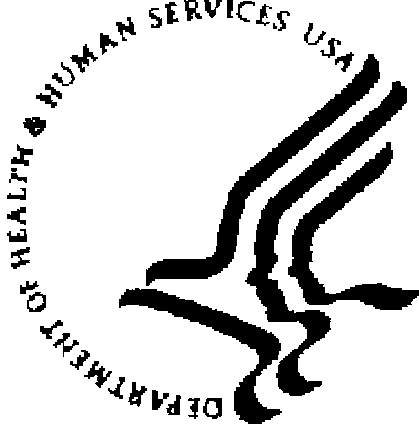OMB Memo
OMB Memo_OnlineStudyFocusGroups_030911.doc
FOCUS GROUPS ABOUT DRUG PRODUCTS
OMB Memo
OMB: 0910-0677

Public Health Service
DEPARTMENT OF HEALTH & HUMAN SERVICES Food and Drug Administration

Memorandum
Date |
March 09, 2011 |
From
|
PRA Specialist, Paperwork Reduction and Records Management Staff, Office of Information Management
|
Subject
|
Request for Approval of FDA Focus Group, “Examination of Online Direct-to-Consumer Prescription Drug Promotion”; OMB Control No. 0910-0497 |
To |
Human Resources and Housing Branch Office of Information and Regulatory Affairs, OMB Through: HHS Reports Clearance Officer___________________
|
The Food and Drug Administration (FDA), Center for Drug Evaluation and Research (CDER)/Division of Drug Marketing, Advertising, and Communications (DDMAC) is seeking OMB approval under the generic clearance 0910-0497 to conduct a focus group project, “Examination of Online Direct-to-Consumer Prescription Drug Promotion,” to investigate how consumers use online health communities and social media sites to make health decisions, especially regarding prescription treatments. This information will be critical in our development of future quantitative research studies.
Purpose of the Focus Group
The qualitative focus group is a valuable tool for developing a future research agenda. Currently, DDMAC has an active research program with funds committed for important projects. In order to maximize resources and anticipate future needs, it is necessary for DDMAC to explore avenues for future research so that a solid research plan is in place. The focus groups proposed in this memo will allow us to investigate an area of great interest to DDMAC and other stakeholders and to sharpen the focus of the research questions for later quantitative studies.
The goal of this project is to conduct exploratory research into how consumers use online health communities and social media sites to make health decisions, especially regarding prescription treatments. Consequently, we intend to examine issues surrounding membership, community selection, activities and participation, discussion topics, treatment decisions and information sources, treatment information seeking, outside participants, and branded drug communities.
Participants
DDMAC proposes a total of ten focus groups:
3 focus groups will include general online health community participants.
2 focus groups will include active online health community participants (e.g., those who visit online communities more than once per week and actively participate in discussions).
2 focus groups will include passive online health community participants (e.g., those who visit sites less frequently and tend to gather, rather than share, information).
1 focus group will include online health community participants with the same medical condition who have recently been diagnosed.
1 focus group will include online health community participants with the same medical condition who have recently made a treatment decision.
1 focus group will include online health community participants who are all part of the same health community.
The first seven focus groups will be conducted in person (three in the Washington, DC area and four in one or more other U.S. cities). The last three focus groups will be conducted online. All participants shall be 18 years of age or older.
Incentive
According to Karen Sollod of OMR Market Research and Focus Groups based in Washington, DC, in the fall of 2010, $75 had been the industry standard for in person focus groups until two or three years ago. At that time, facilities in Washington, DC, Philadelphia, Dallas, and Seattle began to offer a $100 incentive for consumers. According to these facilities, with the current cost of gas and other travel expenses, $100 is the new standard for ensuring participation in qualitative research. Given this information, we propose a $75 incentive for in person focus group participants.
According to Frank Forney, MBA, corporate account executive at iTracks, participant incentives range from $50-75 for a one-hour session for online focus groups, depending on the “incidence” or rarity of the sample. We propose a $50 incentive for online participants to ensure that we are able to attract a reasonable cross-section of consumers.
Table 1. Participant populations and group breakdown.
Mode |
Participants |
# Groups |
# Participants per Group |
In person |
General online health community participants |
3 |
8-10 |
In person |
Active online health community participants |
2 |
8-10 |
In person |
Passive online health community participants |
2 |
8-10 |
Online |
Recently diagnosed health community participants |
1 |
8-10 |
Online |
Treatment decision health community participants |
1 |
8-10 |
Online |
Core health community participants |
1 |
8-10 |
|
Total |
10 |
80-100 |
Table 2. Estimated Annual Reporting Burden for Selected Respondents
Number of Respondents |
No. of Responses per Respondent |
Total Annual Responses |
Average Burden per Response (in hours) |
Total Hours |
200 (screener) |
1 |
200 |
1/30 |
7 |
70 (in person focus groups) |
1 |
70 |
2 |
140 |
30 (online focus groups) |
1 |
30 |
1 |
30 |
|
|
|
|
177 |
Depending on the results of the focus group, we plan to develop a quantitative study examining the role of social media in DTC advertising of prescription drugs.
We plan to conduct these focus groups during fiscal year 2011.
If you have any questions, please contact Elizabeth Berbakos at 301-796-3792.
Attachments
| File Type | application/msword |
| Last Modified By | eberbako |
| File Modified | 2011-04-15 |
| File Created | 2011-04-15 |
© 2025 OMB.report | Privacy Policy